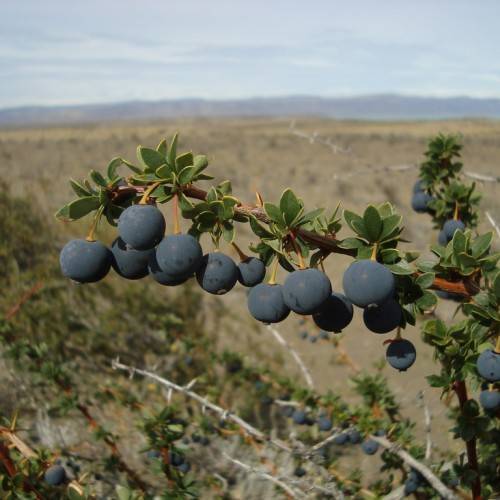
box leaf barberry
Berberis buxifolia
Also Known As - dwarf Magellan barberryCycle:
Perennial
Watering:
Minimum
Hardiness Zone:
6
Flowers:
Flowers In Spring
Sun:
Full sun, Part sun/part shade
Soil:
Rocky , gravelly , dry, Well-drained
Fruits:
Fruits In Summer Ready In Fall
Leaf:
Yes
Growth Rate:
Low
Maintenance:
Low
Drought Tolerant:
Yes
Salt Tolerant:
Yes
Thorny:
Yes
Invasive:
Yes
watering
Box leaf Barberry (Berberis buxifolia) prefer a well draining soil, and should be watered deeply but infrequently, allowing the soil to dry between waterings. On average, water thoroughly every 7 - 14 days in the summer and every 14-21 days in the winter. It is important to adjust the frequency depending on your soil type, environmental conditions and the amount of rainfall. Applying a 2-4'' layer of mulch around the base of the plant will help retain soil moisture and discourage weed growth.
sunlight
Box leaf barberry (Berberis buxifolia) is a full sun loving plant, meaning that it needs at least 6 hours of direct sunlight each day to be healthy. It prefers full sun from around 8 am to 6 pm every day. It can tolerate partial shade, however, it will not tolerate full shade. Sunlight helps this plant species photosynthesize efficiently and grow its foliage. In times of too little sunlight, its leaves may turn yellow or become elongated. Therefore, it’s important to ensure that the box leaf barberry gets the optimal amount of sunlight each day.
pruning
Box leaf barberry should be pruned in the spring, immediately after the plant has finished blooming. It should be pruned to remove any dead, diseased, or damaged branches, as well as any branches that are excessively leggy. The pruning should also be done to help create an overall pleasing form, while still leaving enough foliage to ensure the plant remains healthy and beautiful. Pruning should be done carefully and thoroughly to ensure that no more than 1-third of the total foliage is removed—remove too much and the plant may suffer from shock and die.
